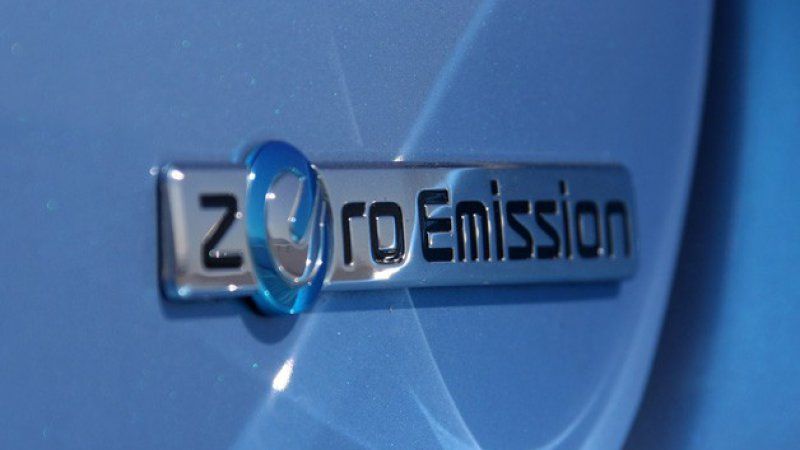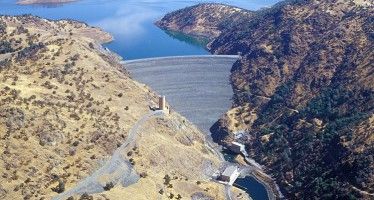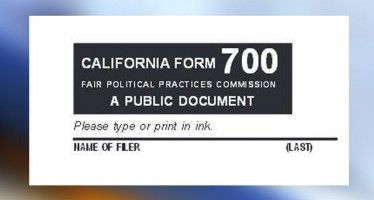Air Resources Board plots new zero-emission vehicle plan
 California’s environmental regulators have revisited their credit program for zero emissions vehicles, which hasn’t done enough to position the state for the kind of carbon savings needed to meet future targets.
California’s environmental regulators have revisited their credit program for zero emissions vehicles, which hasn’t done enough to position the state for the kind of carbon savings needed to meet future targets.
The zero-emissions subsidy hasn’t suffered from a lack of funding in the recent past. “Earlier this year, not long after declaring victory on a hard-fought measure expanding the state’s emission reduction mandate, Gov. Jerry Brown and lawmakers announced a late-session deal on where to send some of the revenue from the state’s cap-and-trade program,” the Fresno Bee recalled. “A big chunk of money in the compromise went to the Air Resource Board’s Low-Carbon Transportation initiative, including over $200 million to bolster programs offering financial incentives for purchasing cleaner vehicles.”
But Brown and the board have struggled to figure out just how to pump zero-emission vehicle acquisitions up to where they must be for California to hit its ambitious emissions targets in coming years. “Brown has argued business interests and resistant legislators will prefer the reliability of cap-and-trade to more stringent dictates,” the paper added earlier this month. “Whether or not the Legislature musters a vote to extend the program beyond a 2020 limit set in statute, the ARB has already begun sculpting regulations that could sustain the system without a vote.”
Now, regulators have unveiled new rule tweaks designed to accomplish those goals. From hereon out, “high-income earners are excluded from getting the rebates and prospective buyers from lower-income households will get more money under the state’s Clean Vehicle Rebate Project,” according to the Los Angeles Times. “California’s focus on income will not affect the substantial tax credits the federal government offers clean-car buyers. The changes are designed to help reach aggressive goals set by Gov. Jerry Brown and the California Air Resources Board to vastly increase the number of zero-emission vehicles on the state’s highways. But it’s unclear whether the changes will get the desired results.”
A demographic hunt
Regulators have not ignored the figures on economic class, ethnicity and automotive habits. “Over 75 percent of new electric car buyers make more than $100,000 a year, according to a survey of rebate recipients by the Air Resources Board,” Southern California Public Radio reported. “Race is a factor, too. A recent UC Berkeley study examined the number of rebates per census tract, and found that black and Latino areas have fewer new electric cars.”
CARB’s shifting agenda has been crafted to help blunt criticism from the Left that cap-and-trade has shifted an unfair burden onto what advocates say area already disadvantaged neighborhoods. “The environmental justice lobby’s concerns about local air pollution are justified: A new report by the U.S. Commission on Civil Rights acknowledges that low-income and minority communities face disproportionately high air pollution,” a pair of climate professors broadly aligned with CARB’s approach recently conceded in an op-ed in the Sacramento Bee pushing for cap-and-trade’s continued use.
In absolute numbers, current totals of credited cars have climbed, but relative to targets, the state’s plan to push them into popularity has failed. “The Golden State has about 240,000 zero-emission vehicles on its roads,” noted SCPR, citing CARB figures. “It’s taken six years to reach that number, and at that rate, the state will not meet the 2025 goal.”
Alternative energy frustrations
Part of the problem arose recently around an apparent mismatch between credits and caps, which caused Elon Musk to warn that regulators needed to toughen up in order for the credit market to flourish. CARB has set a meeting in early December to plot its next move, according to Bloomberg. “The board is reassessing its targets as part of the so-called mid-term review of President Barack Obama’s fuel-economy and emissions goals for 2025. California is the biggest auto market among U.S. states and has the authority to set pollution rules that are more stringent than national standards. It currently requires that a portion of each company’s sales come from electric or other nonpolluting vehicles and allows manufacturers to buy credits from a competitor if they fall behind.”
Related Articles
Rep. Denham trumps Sen. Feinstein’s call for more water storage
Sen. Dianne Feinstein, D-Calif., is calling for more water storage for California. But the storage already exists for much of what is
State lawmakers’ financial interests now posted online
Mike McGuire made over $100,000 in 2014 as a Sonoma County supervisor and another $525 in parting gift certificates as
Insurance Czar-elect Targets ER Bills
NOV. 9, 2010 By KATY GRIMES Emergency room physicians used to receive timely payments for services from insurance companies. Then




